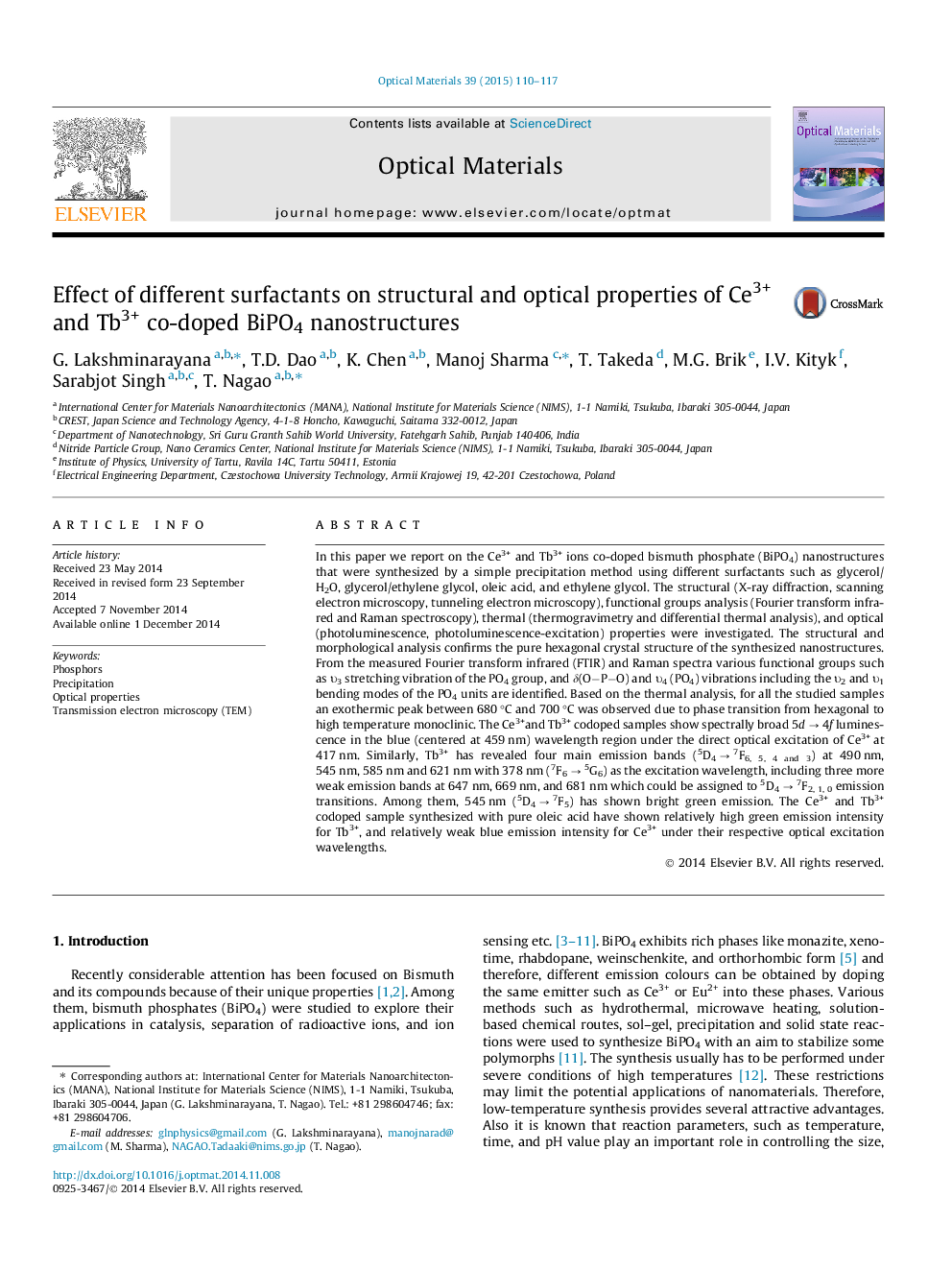| کد مقاله | کد نشریه | سال انتشار | مقاله انگلیسی | نسخه تمام متن |
|---|---|---|---|---|
| 1494233 | 1510795 | 2015 | 8 صفحه PDF | دانلود رایگان |

• Lanthanides codoped BiPO4 nanophosphors are synthesized.
• Structural, thermal and optical properties were analyzed.
• Structural studies confirmed the hexagonal phase of BiPO4.
• Ce3+ and Tb3+ show blue, and green luminescence under their respective excitation wavelengths.
In this paper we report on the Ce3+ and Tb3+ ions co-doped bismuth phosphate (BiPO4) nanostructures that were synthesized by a simple precipitation method using different surfactants such as glycerol/H2O, glycerol/ethylene glycol, oleic acid, and ethylene glycol. The structural (X-ray diffraction, scanning electron microscopy, tunneling electron microscopy), functional groups analysis (Fourier transform infrared and Raman spectroscopy), thermal (thermogravimetry and differential thermal analysis), and optical (photoluminescence, photoluminescence-excitation) properties were investigated. The structural and morphological analysis confirms the pure hexagonal crystal structure of the synthesized nanostructures. From the measured Fourier transform infrared (FTIR) and Raman spectra various functional groups such as υ3 stretching vibration of the PO4 group, and δ(O−P−O) and υ4 (PO4) vibrations including the υ2 and υ1 bending modes of the PO4 units are identified. Based on the thermal analysis, for all the studied samples an exothermic peak between 680 °C and 700 °C was observed due to phase transition from hexagonal to high temperature monoclinic. The Ce3+and Tb3+ codoped samples show spectrally broad 5d → 4f luminescence in the blue (centered at 459 nm) wavelength region under the direct optical excitation of Ce3+ at 417 nm. Similarly, Tb3+ has revealed four main emission bands (5D4 → 7F6, 5, 4 and 3) at 490 nm, 545 nm, 585 nm and 621 nm with 378 nm (7F6 → 5G6) as the excitation wavelength, including three more weak emission bands at 647 nm, 669 nm, and 681 nm which could be assigned to 5D4 → 7F2, 1, 0 emission transitions. Among them, 545 nm (5D4 → 7F5) has shown bright green emission. The Ce3+ and Tb3+ codoped sample synthesized with pure oleic acid have shown relatively high green emission intensity for Tb3+, and relatively weak blue emission intensity for Ce3+ under their respective optical excitation wavelengths.
Figure optionsDownload high-quality image (248 K)Download as PowerPoint slide
Journal: Optical Materials - Volume 39, January 2015, Pages 110–117